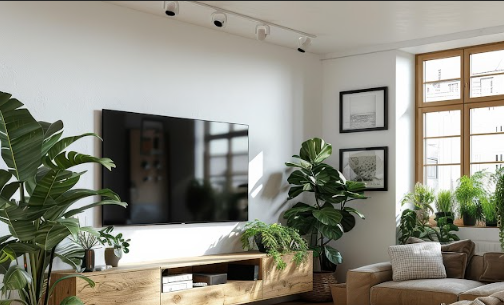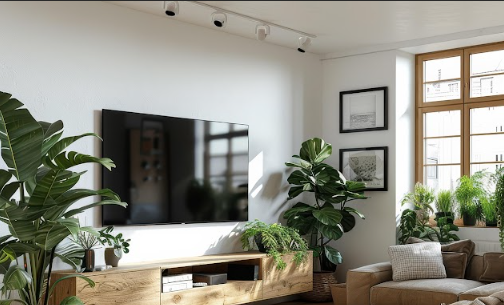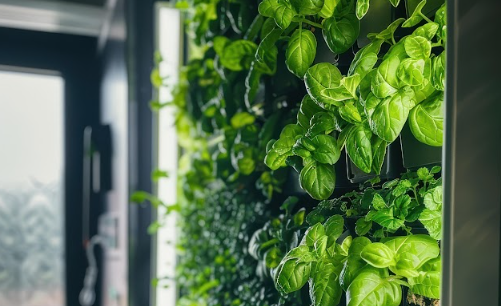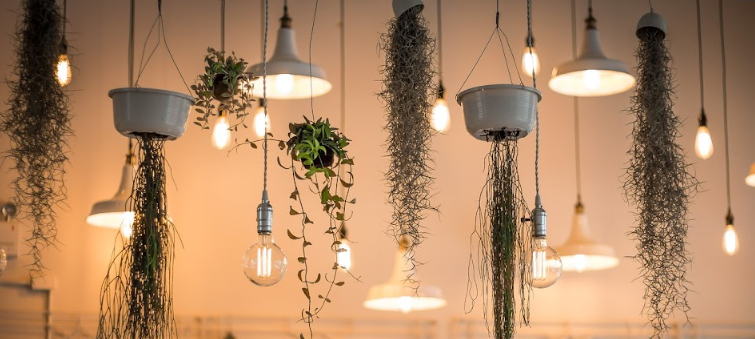5 Smart Ways to Integrate Biophilic Design into Your Space Or Blurring Lines Between Indoor and Outdoor Design
In an era of digital living, when our connection to nature is diminishing, the biophilic interior design approach brings nature right into your space, regardless of its size. Biophilia is not just a concept; it’s a philosophy that explores our innate love for nature. The core idea behind biophilic interior design is to integrate natural elements and patterns into built environments — be it a home, office, or commercial space — in a way that not only fosters a deeper connection with nature but also enhances overall health and well-being.
From maximizing natural light to incorporating greenery, here are five clever and practical ways to embrace biophilic design in your space.

1. Maximize Natural Light
Natural light is one of the most essential aspects of biophilic design. It not only reduces the need for artificial lighting but also helps regulate circadian rhythms, improving sleep quality and overall well-being. The simplest yet most effective ways to do it is by incorporating large windows and skylights to allow sunlight to flood your space. You may even opt for sheer curtains or blinds that diffuse light while maintaining privacy instead of heavy drapes that block sunlight. Besides, you may arrange workspaces and seating areas closer to windows to maximize daylight exposure, enhancing productivity and mood.

2. Bring in Greenery
Greenery instantly transforms interiors, making spaces feel fresher, more vibrant, and inviting. Indoor plants, vertical gardens, and living walls instantly infuse nature into interiors. You can opt for low-maintenance plants like pothos, snake plants, or ferns to improve air quality and add a touch of greenery. If space is limited, hanging planters or small potted plants on shelves and desks can make a significant impact without taking up floor space. At workspace, you can even opt for plant partitions instead of traditional dividers to create flexible and nature-inspired zoning.

3. Use Natural Materials and Textures
Natural materials evoke warmth, authenticity, and a strong connection to the environment. They bring in rich textures and depth, creating a sensory experience that mimics the outdoors. Incorporate organic materials such as wood, stone, bamboo, and rattan to create a tactile connection with nature. Besides, adding wooden flooring, stone countertops, and linen or wool textiles can also evoke warmth and authenticity. In addition, choosing furniture and décor with earthy tones or terracotta, and natural finishes enhances the biophilic experience. By surrounding yourself with these natural elements, you can create a visually appealing space that feels grounded and serene.

4. Introduce Water Elements for a Calming Effect
Water is a powerful biophilic element that elevates the aesthetics of a space but also promotes relaxation and reduces stress. Integrating water features such as a small tabletop fountain can add both aesthetic and sensory value to a space. You can also choose an indoor water wall or an aquarium to introduce a meditative ambiance. For outdoor spaces, consider a pond or water feature to create a tranquil oasis that connects seamlessly with nature.

5. Bridge Indoor-Outdoor Connection
A strong indoor-outdoor connection enhances spatial flow, making interiors look more open, airy, and refreshing. Try opening up spaces with sliding glass doors, balconies, patios, or rooftop gardens. If outdoor access is limited, using nature-inspired artwork, earthy color palettes, or nature-mimicking wallpapers can evoke a similar sense of connection. When designed thoughtfully, these elements create a holistic environment that fosters a healthier and more harmonious living environment.

